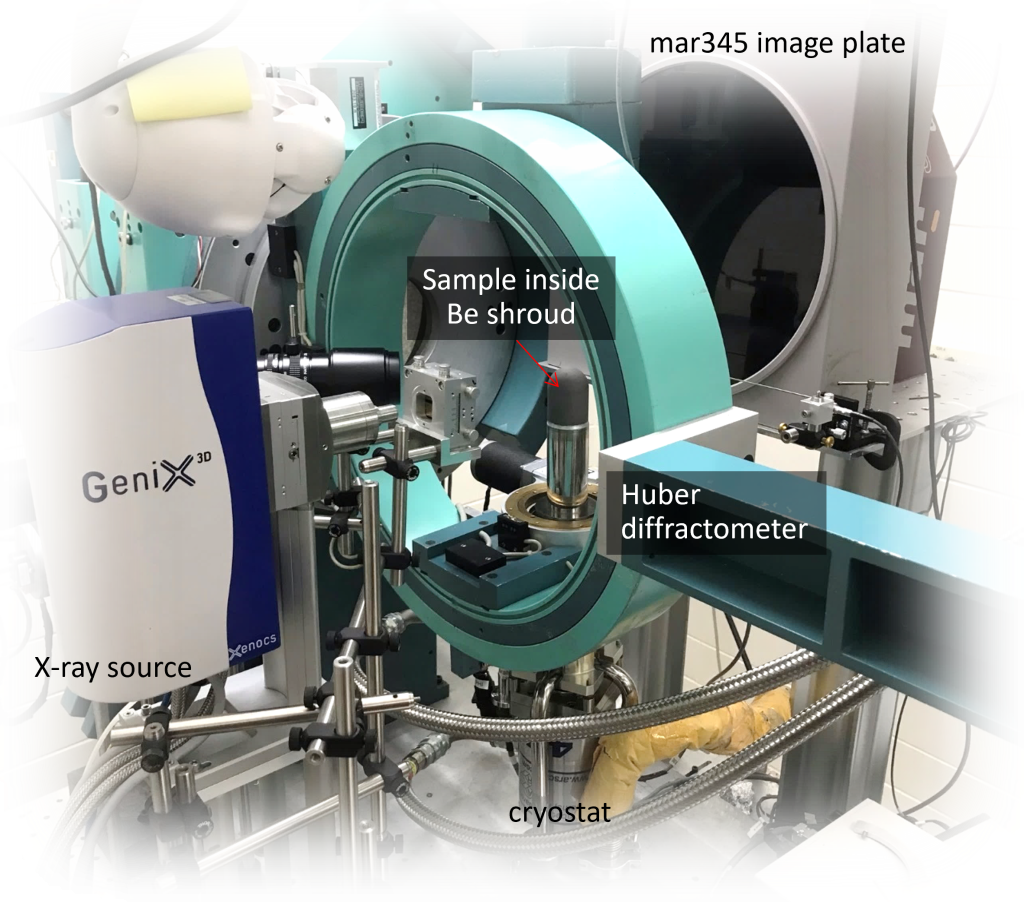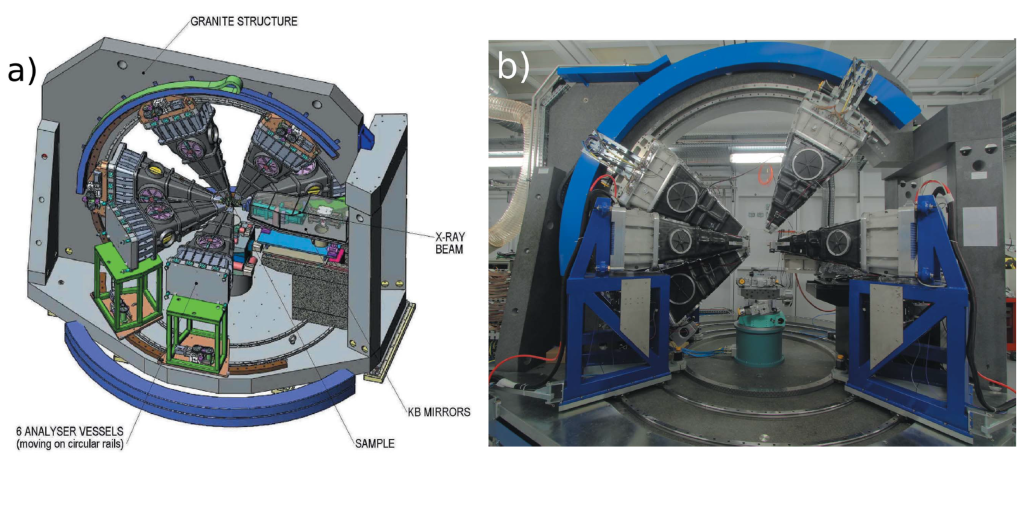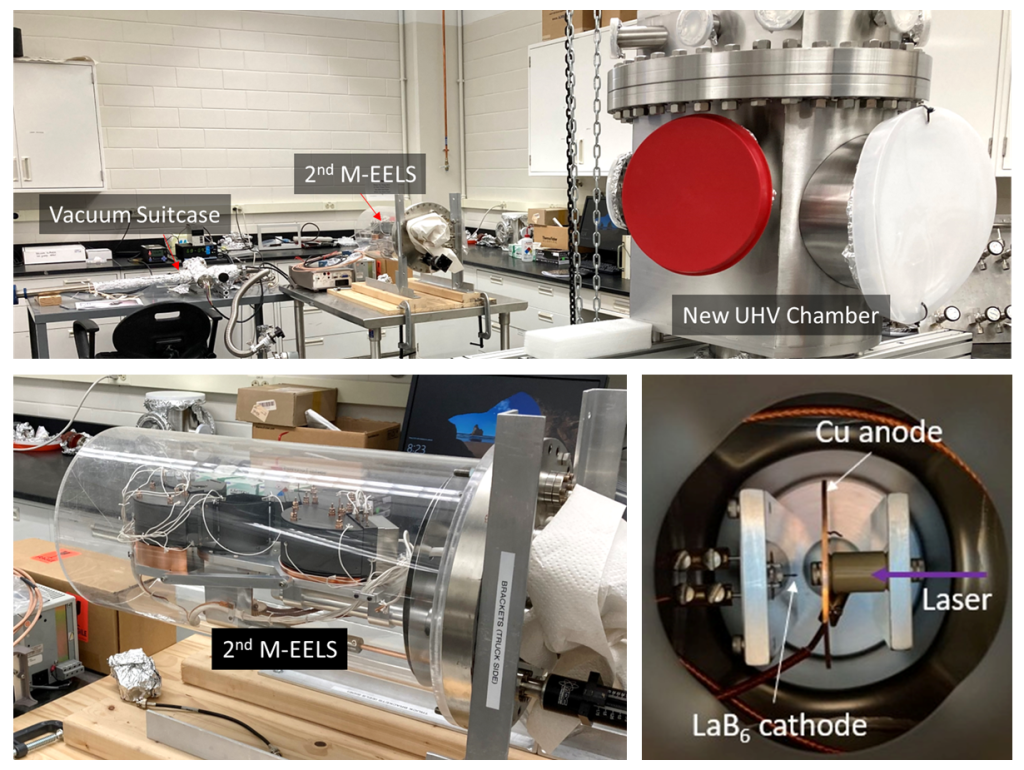Research
Our group is broadly focused on understanding the quantum many-body problem and all its manifestations in the collective properties condensed matter.
Our strategy is to develop and apply new, advanced scattering and spectroscopy techniques that detect various sorts of collective excitations in materials.
Low-energy collective excitations in condensed matter with M-EELS
Momentum-resolved EELS (which we have been calling M-EELS) is an electron scattering technique for measuring the infrared optical response of materials. Unlike photon-based techniques, M-EELS can measure excitations at nonzero momentum, meaning we can uniquely study how collective modes disperse throughout the Brillouin zone. Funded by the Gordon and Betty Moore Foundation, some of our notable achievements have been the observation of a Bose condensate of excitons in TiSe2 [Kogar 2017] and the discovery of a demon, which is a particle predicted in 1956 and not observed until 2023 [Husain 2023].

Quantum phase transitions

Classical phase transitions normally occur through a competition between energy and entropy, a generic example being the melting transition, in which a solid (a low energy, low entropy state) gives way to a liquid (a higher energy, higher entropy state) as temperature is increased. In a surprisingly large number of materials, a phase transition can occur at zero temperature as a function of some external parameter, such as applied pressure, uniaxial strain, carrier density, etc., resulting in a so-called quantum critical point (QCP). There being no concept of entropy at zero temperature, a general understanding of how such transitions takes place does not exist.
Our group uses advanced x-ray scattering techniques to study the quantum fluctuations near such phase transitions, to understand the mechanisms by which they take place.
Scattering experiments at national facilities

We do many of our experiments in our labs in the Materials Research Laboratory. But we also lead many big experiments at national facilities, including synchrotron and free-electron laser sources, neutron facilities, and electron microscopy facilities across North America and Europe.
New Projects

We are always developing new instruments, pushing the state of the art in experimental techniques, which is usually how big discoveries are made. Currently we are developing a second EELS instrument that uses hemispherical analyzers, which should be much faster than current techniques, and are also exploring time-of-flight techniques, which should be faster still.